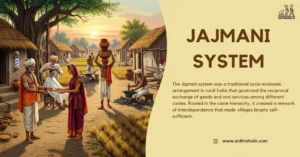AI Answer Evaluation Platform Live Now. Try Free Answer Evaluation Now
Numismatics
Numismatics is a fascinating field of study that involves the collection and examination of coins, currency, tokens, and other related objects. With a history that spans thousands of years, numismatics provides valuable insights into the economic, cultural, and political developments of societies around the world. [4]
The study of numismatics involves not only the identification and classification of coins and currency but also their history, art, and economic and political systems associated with them. It requires a deep understanding of the cultures that produced the coins and the historical events that shaped their development. [3]

At its core, numismatics is a multidisciplinary field that combines elements of history, art, economics, and politics. Whether you’re a serious collector or a casual enthusiast, exploring the world of numismatics can be a rewarding and enriching experience.
History of Numismatics
The history of numismatics dates back thousands of years to ancient civilizations such as Greece, Rome, and China, where coins were used as a medium of exchange. The study of coins and currency began as a way to understand the political, economic, and cultural systems of these societies.
During the Middle Ages, the use of coins became widespread throughout Europe, and rulers began to use them as a means of asserting their authority. This led to the production of coins with elaborate designs and inscriptions that reflected the power and prestige of their issuers.
In the Renaissance period, numismatics became a more formalized discipline, with collectors and scholars cataloguing and studying ancient coins. The first numismatic society, the Society of Antiquaries, was established in London in 1707.
The 19th century saw a surge of interest in numismatics, as people began to collect coins and currency as a hobby. Museums and private collections grew, and numismatics became recognized as a legitimate field of study.
Today, numismatics continues to thrive, with collectors and scholars studying everything from ancient Greek coins to modern paper currency. Advances in technology have made it easier to identify and catalogue coins, while online marketplaces have made it easier to buy and sell them.
Overall, the history of numismatics is closely tied to the history of human civilization itself. Coins and currency have played a vital role in shaping the world we live in today, and the study of numismatics helps us better understand the economic, cultural, and political systems that have shaped our past and continue to shape our future.
Modern Numismatics
Modern numismatics refers to the study and collection of coins and currency that are currently in circulation or have been recently issued. This includes not only traditional coins and paper currency but also newer forms of currency such as digital currencies like Bitcoin.
One of the driving forces behind modern numismatics is the increasing popularity of coin and currency collecting as a hobby. As more people become interested in collecting, the market for modern coins and currency has grown, with many modern coins and currency notes becoming valuable collectibles in their own right.[1]
Modern numismatics also encompasses the study of new coin designs and the technologies used to produce them. For example, many countries now use advanced minting techniques such as laser engraving and colorization to produce coins with intricate designs and stunning visual effects.
In addition to traditional coins and currency, modern numismatics also includes the study of digital currencies, such as Bitcoin and other cryptocurrencies. These digital currencies are not physical coins or currency notes but are instead stored electronically and used for online transactions. As more people begin to use digital currencies, the study of numismatics is evolving to include the study of these new forms of currency.
Modern numismatics is a vibrant and growing field that encompasses a wide range of coins, currency notes, and other forms of currency. With new technologies and currencies emerging all the time, the study of numismatics is constantly evolving and promises to remain an exciting field of study for many years to come.[5]
Exonumia
Exonumia is a branch of numismatics that deals with the study and collection of objects that are similar to coins or currency but are not legal tender. This includes items such as medals, tokens, badges, and other items that are issued for commemorative, advertising, or souvenir purposes.[2]
Exonumia objects come in a wide range of forms and designs, and they can be made from a variety of materials such as metal, plastic, and even paper. They are often created to mark a specific event, celebrate a person or organization, or commemorate a historic milestone.
Medals are one of the most popular types of exonumia objects. They are usually awarded for sporting events or military service and often feature intricate designs and engravings. Tokens, on the other hand, are small, round objects that were often used as a substitute for coins in situations where change was needed. Advertising tokens were also popular in the late 19th and early 20th centuries, and they were often given out by businesses as a way of promoting their products.
Exonumia objects can be found in a wide range of collections, from personal collections to public museums. They offer a unique perspective on the history and culture of societies around the world and can provide insights into the values, beliefs, and priorities of different groups and organizations.
Notaphily
Notaphily is the branch of numismatics that deals with the study and collection of paper currency, including banknotes, bills, and other forms of paper money. Notaphily collectors often specialize in certain regions or eras and collect notes for their historical and aesthetic value.
The study of notaphily involves examining the designs, printing techniques, and security features of banknotes, as well as the political and economic contexts in which they were issued. Collectors may also focus on rare or unusual notes, such as those issued during times of war or political upheaval, or those with printing errors or other anomalies.
Notaphily collections can range from a few notes to vast collections that span many different countries and eras. Collectors may specialize in specific regions or themes, such as notes from a particular country, period, or currency system.
One of the benefits of notaphily is that paper currency is generally easier to obtain and store than traditional coins or exonumia objects. Many collectors appreciate the intricate designs and colorful artwork that is often featured on banknotes, and they may seek out notes with particularly interesting or rare designs.
Notaphily also provides insights into the economic and political history of different regions and countries. Banknotes can be used as a way of understanding the values, beliefs, and priorities of different societies and governments, and they can offer a unique perspective on the way that money and finance have evolved over time.
Scripophily
The study of scripophily involves researching the history of the companies that issued the certificates, as well as the economic and political contexts in which they were issued. Collectors may also focus on the artistic and aesthetic qualities of the certificates, as well as the printing techniques and materials used to create them.
Scripophily collections can range from a few certificates to vast collections that span many different industries and eras. Collectors may specialize in specific themes, such as railroad or mining certificates, or they may seek out rare or unusual certificates that are difficult to obtain.
One of the benefits of scripophily is that it provides insights into the economic and political history of different regions and countries. Stock and bond certificates are often issued during times of economic growth or crisis, and they can be used as a way of understanding the values, beliefs, and priorities of different societies and governments.
Numismatics enthusiasts, or numismatists, collect coins and currency for various reasons, including their historical significance, aesthetic appeal, and monetary value. Some even specialize in certain eras, regions, or types of coins.
Awards
Numismatics, the study and collection of coins, medals, and other currency-related objects, has a long history of recognition and awards. There are several notable awards and honors that recognize contributions to the field of numismatics, including:
1. Huntington Medal Award: This award, named after the American collector Archer M. Huntington, is presented by the American Numismatic Society to individuals who have made significant contributions to the study and understanding of numismatics.
2. Numismatic Literary Guild Awards: These awards recognize outstanding achievement in numismatic writing, publishing, and research. Categories include best book, article, and online content related to numismatics.
3. ANA Awards: The American Numismatic Association presents a range of awards to individuals who have made significant contributions to the study, education, and advancement of numismatics. These include the Numismatist of the Year, Lifetime Achievement Award, and Presidential Award.
4. IAPN Book Prize: The International Association of Professional Numismatists awards a prize for the best numismatic book published in the previous year.
5. FENAPM Medal of Merit: The Federation of European Numismatic Associations presents this award to individuals who have made outstanding contributions to the advancement of numismatics in Europe.
These are just a few examples of the many awards and honors that exist in the field of numismatics. These awards recognize the importance of numismatics as a field of study and the contributions that individuals make to its continued development and understanding.
Numismatic Journals
There are several numismatic journals that are widely respected and recognized within the field of numismatics. These journals publish articles, research papers, and other content related to the study and collection of coins, medals, and other currency-related objects. Some of the most notable numismatic journals include:
1. The Numismatist: This is the official journal of the American Numismatic Association and is published monthly. It contains articles on numismatic research, coin collecting, and current events in the numismatic community.
2. The Journal of Numismatic Association of Australia: This is the official journal of the Numismatic Association of Australia and is published quarterly. It contains articles on Australian numismatics as well as international coin collecting and research.
3. The Journal of the British Numismatic Society: This is the official journal of the British Numismatic Society and is published twice a year. It contains articles on all aspects of numismatics, with a particular emphasis on British coins and medals.
4. Numismatic Chronicle: This is the oldest continuously published numismatic journal in the world, having first been published in 1838. It is published annually by the Royal Numismatic Society and contains articles on all aspects of numismatics, with a particular emphasis on ancient coins and medals.
5. Revue Numismatique: This is a French-language journal published by the Société française de numismatique. It contains articles on all aspects of numismatics, with a particular emphasis on French and European coins and medals.
6. Numismatic Notes and Monographs: This is a series of monographs published by the American Numismatic Society. It contains detailed studies of specific coins, medals, or other numismatic objects.
These are just a few examples of the many numismatic journals that exist. Each journal has its own focus and editorial policies, so it is important to research and choose the most appropriate journal for your specific area of interest or research.
Primitive and nonmetallic money
Primitive and nonmetallic money are forms of currency that were used before the introduction of metal coins and paper money. These forms of currency have also been studied and collected within the field of numismatics.
Primitive money refers to any form of currency that is not manufactured, such as natural objects like shells, beads, or stones. In many societies, these objects were used as a means of exchange and were often considered valuable because they were rare or difficult to obtain. Examples of primitive money include cowrie shells used in Africa and Asia, wampum belts used by Native American tribes, and kula rings used in the Pacific Islands.
Nonmetallic money refers to any form of currency that is not made of metal, such as paper money, plastic cards, or other materials. While these forms of currency may be more modern than primitive money, they are still of interest to numismatists because they have played a significant role in the development of modern economies. For example, paper money was first introduced in China during the Tang Dynasty and gradually spread throughout the world.
Numismatists who specialize in primitive and nonmetallic money study the historical, cultural, and economic contexts in which these forms of currency were used. They may also collect examples of primitive and nonmetallic money for their historical or aesthetic value.
The study of primitive and nonmetallic money is an important aspect of numismatics, as it helps us to understand the origins and evolution of currency, as well as the role that it has played in human society throughout history.
Conclusion
In conclusion, numismatics is a fascinating field of study that encompasses the history, art, and science of coins, medals, and other currency-related objects. From ancient coins and medieval medals to modern paper money and non-metallic currencies, numismatics covers a broad range of topics and disciplines.
Through the study and collection of coins and other currency-related objects, numismatists gain a deeper understanding of the societies and cultures that produced them, as well as the economic systems that they helped to shape. They also contribute to the preservation and documentation of historical artifacts and the promotion of cultural heritage.
Numismatics is not only an academic discipline but also a popular hobby and a form of investment. Many people collect coins and other currency-related objects for their historical, artistic, or monetary value, and there are numerous organizations and societies dedicated to the study and collection of these objects.
Overall, numismatics provides a unique and rewarding way to explore the history and culture of human societies through the lens of currency. Its interdisciplinary nature and diverse subject matter make it a fascinating field for both scholars and enthusiasts alike.
Reference
[1] Monetary History Timeline 1900 – 1919. (n.d.). Monetary History Timeline 1900 – 1919. http://www.ex.ac.uk/~RDavies/arian/amser/chrono14.html
[2] numismatics | Etymology, origin and meaning of numismatics by etymonline. (2019, July 18). Numismatics | Etymology, Origin and Meaning of Numismatics by Etymonline. https://www.etymonline.com/?term=numismatics
[3] What Is Numismatics? Meaning, Qualifications, and Example. (2022, June 23). Investopedia. https://www.investopedia.com/terms/n/numismatics.asp
[4] Definition of NUMISMATIC. (2023, April 12). Numismatic Definition & Meaning – Merriam-Webster. https://www.merriam-webster.com/dictionary/numismatic
[5] Numismatics: The study of coins. (2017, March 9). YouTube. https://www.youtube.com/watch?v=aMLj6fldUss



